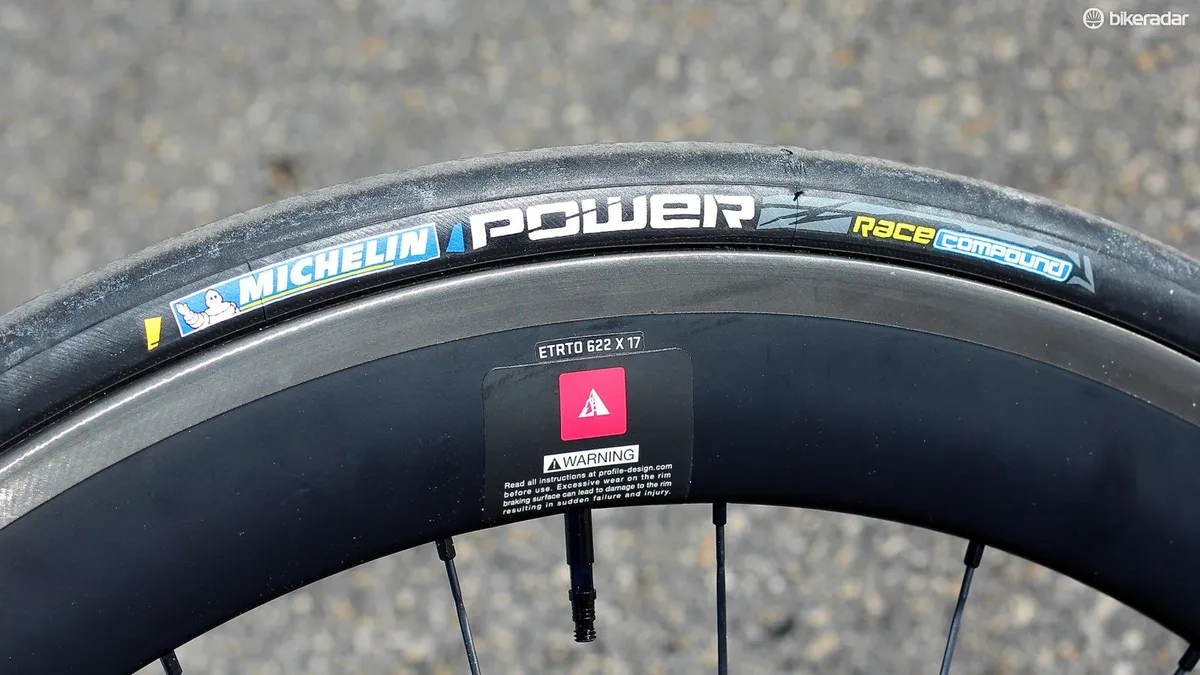Updated Feb 2017 to include data from Wheel Energy testing and to improve rating to five stars
Based on BikeRadar-commissioned lab testing, Michelin Power Competition is the best performance clincher on the market today.
- 10 of the best performance road tires lab tested
- The secrets of Michelin's fastest-ever tire compounds
Michelin’s new Power Competition proved faster in terms of rolling resistance when tested against the likes of Continental’s gold standard Grand Prix 4000 SII and Specialized’s very fast Turbo Cotton, among others.
Only one of the 10 tires we sent to testing expert Wheel Energy proved faster than the Power Competition and that was Schwalbe’s Pro One Tubeless. No other clincher was faster.
Also, while the Pro One is undeniably fast, it wears quickly and is prone to punctures because it is so thin. The Michelin Power Competition, by contrast, isn’t paper-thin, which is often the price you pay for super-fast tires. In fact, in our testing over the past year, we have had great luck with flats and found that the tires wear at a decent rate.

Great feel, great grip
I first tested the Power Competitions a year ago in Texas and found them to be light and tenaciously grippy right out of the gate.
Michelin had Team Elevate guide a group of three journalists on a rollercoaster stretch of road northwest of Austin, Texas, which offered a nice variation of hard, tight turns over sharply undulating tarmac. Riding a demo bike set up that morning to my normal measurements, I felt right at home, happy to dive blindly through any corner on the locals’ wheels.
But since testing tires on ‘feel’ is challenging at best, I felt I couldn’t confirm or discount Michelin’s claims of saving 10 watts over the company’s PRO4 Service Course.
Then, former pro mechanic and longtime tech writer Nick Legan went to France for testing using power meters. There, Legan found the Power Competition to be 23 seconds faster than the Pro4 Service Course over a 5.5km course at the same power. The average for a group of 30 journalists on the same test was 18 seconds faster on the new tire.

More BikeRadar road and lab testing
This winter we sent 10 pairs of tire models to Wheel Energy in Finland for rolling resistance tests. Wheel Energy tested on both smooth and rough drums. The rough drum has metal ridges to replicate the varied surface of a normal road.
In both tests, the Michelin Power Competition came out as the fastest clincher.
Meanwhile, we have had months to ride and race the tires on a broad variety of surfaces. Our initial impressions have held up — the tires feel great in terms of grip and comfort, and durability is very good for a performance clincher.
If you want a fast set of dependable clinchers, Michelin Power Competition is the best we’ve tested.

p.p1 {margin: 12.0px 0.0px 12.0px 0.0px; line-height: 15.0px; font: 12.0px Arial; color: #333333; -webkit-text-stroke: #333333; background-color: #ffffff} span.s1 {font-kerning: none} p.p1 {margin: 12.0px 0.0px 12.0px 0.0px; line-height: 15.0px; font: 12.0px Arial} p.p1 {margin: 12.0px 0.0px 12.0px 0.0px; line-height: 15.0px; font: 12.0px Arial} p.p1 {margin: 12.0px 0.0px 12.0px 0.0px; line-height: 15.0px; font: 12.0px Arial; color: #333333; -webkit-text-stroke: #333333; background-color: #ffffff} span.s1 {font-kerning: none} p.p1 {margin: 12.0px 0.0px 12.0px 0.0px; line-height: 15.0px; font: 12.0px Arial}





